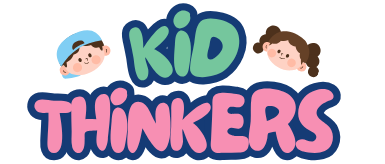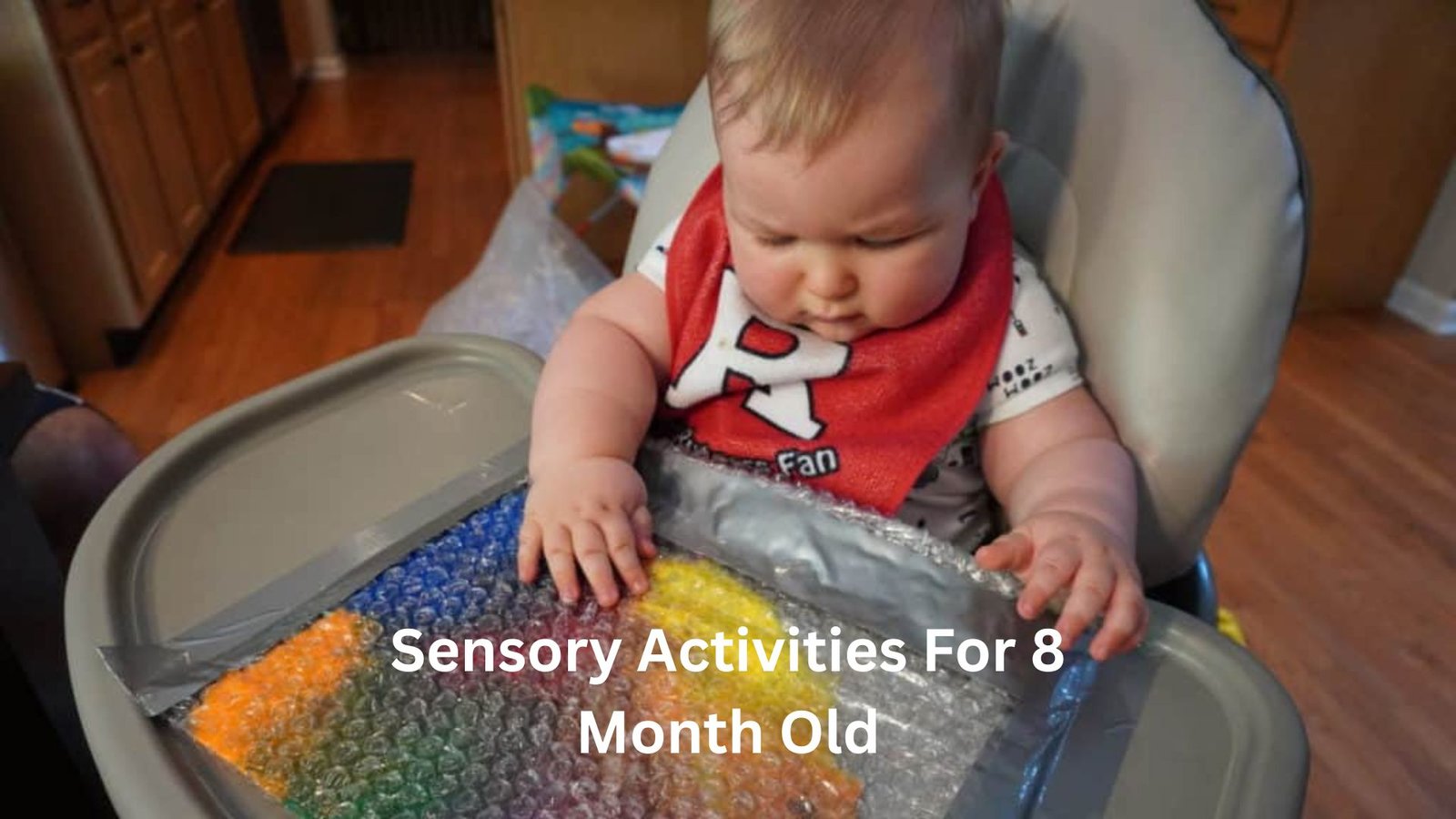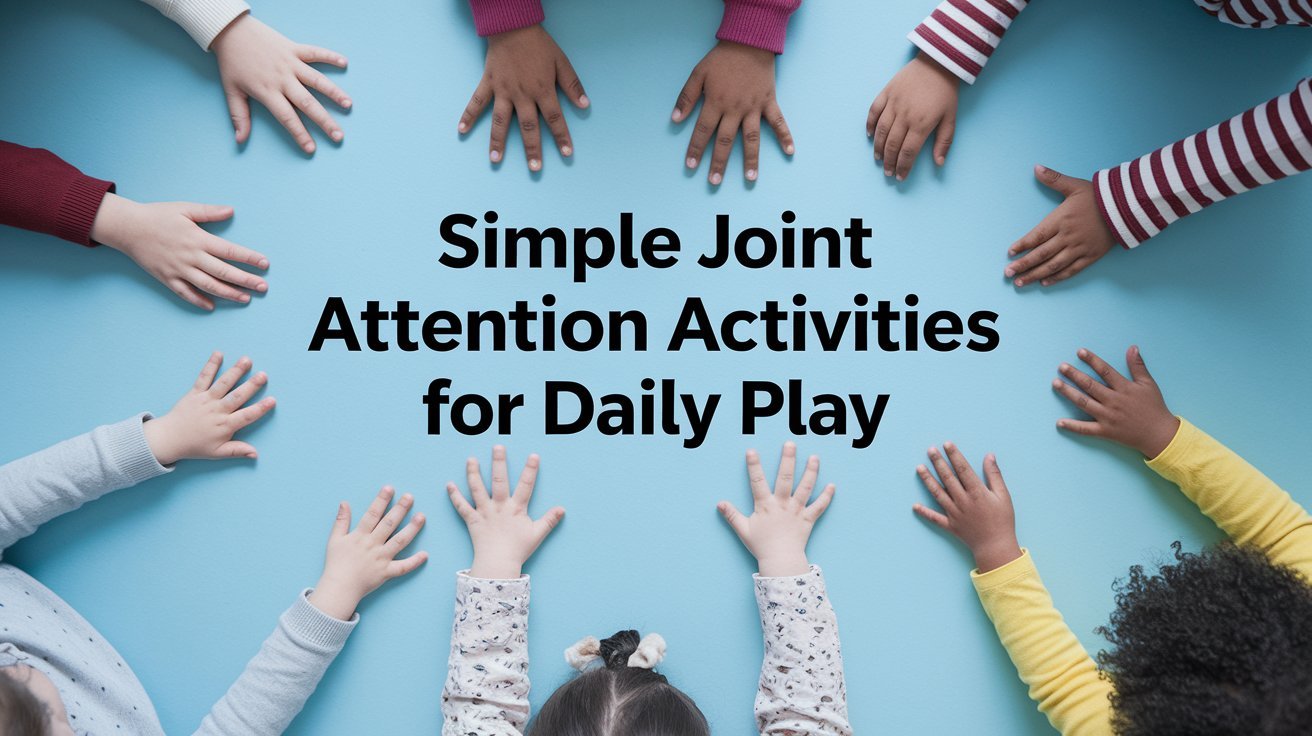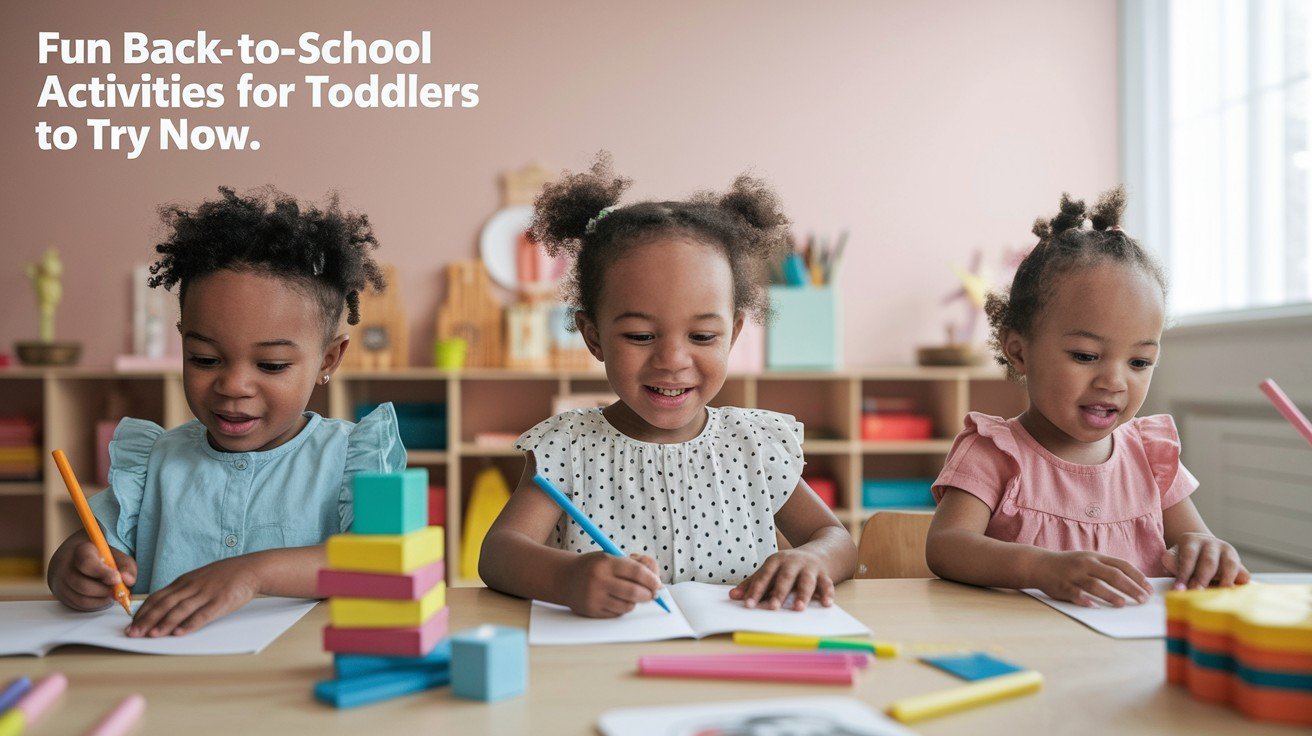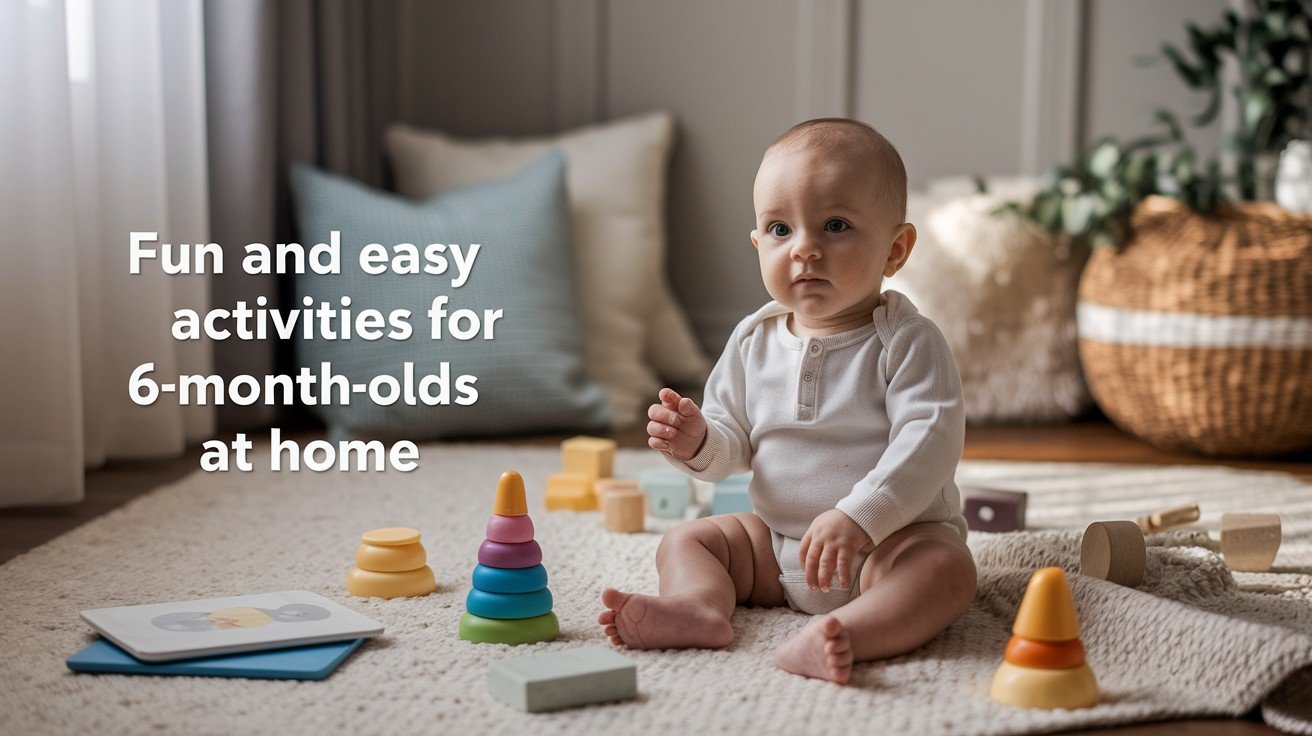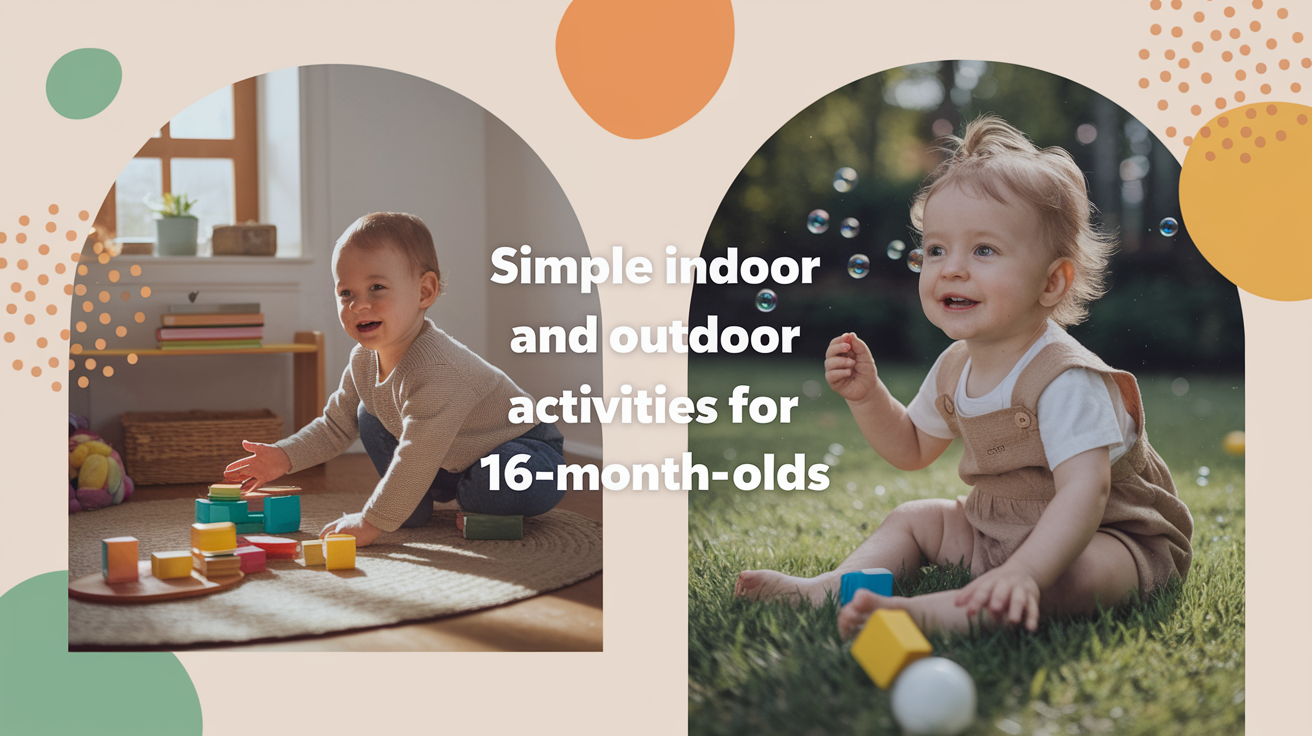Your 8-month-old is now in the middle of such an incredible stage since every wiggle, sound, and smile is surely helping their brain grow with true lightning speed. The way that your baby looks at, listens to, and touches the world.
At this age, your little one’s curiosity blossoms. Everything captures their attention. Sensory play safely lets children find movements, sounds, and textures as important skills grow. These moments turn everyday objects into exciting discoveries.
The best part? Toys of a special type are not needed. You can create activities that spark joy and then help all of your baby’s senses bloom using simple items from inside your home in one playful moment at a time.
Best Sensory Activities for an 8-month-old
These activities work perfectly for your 8-month-old because they match where your baby is right now in their growth and learning.
Textured Touch
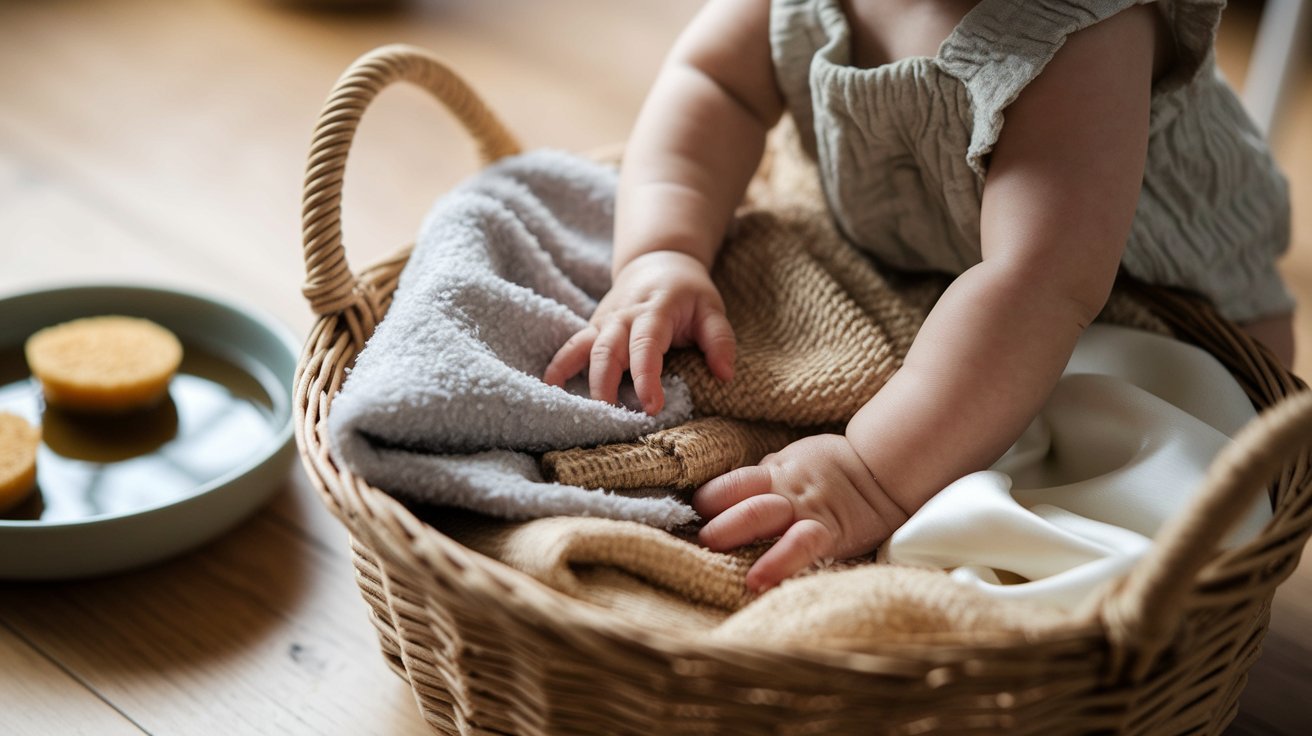
Your baby’s fingers are like tiny scientists right now. They want to touch everything and learn what makes each object different from another.
Start with a small basket of safe fabrics. Include soft fleece, bumpy corduroy, smooth satin, and scratchy burlap. Let your baby grab each one and feel the differences. You can name the textures as “That’s soft” or “This one feels bumpy.”
Natural sponges in a shallow bowl of water add another level of fun. Your baby can squeeze them and watch water drip out. The sponge feels different when it’s wet versus dry, giving two experiences in one toy.
Water Play Activities
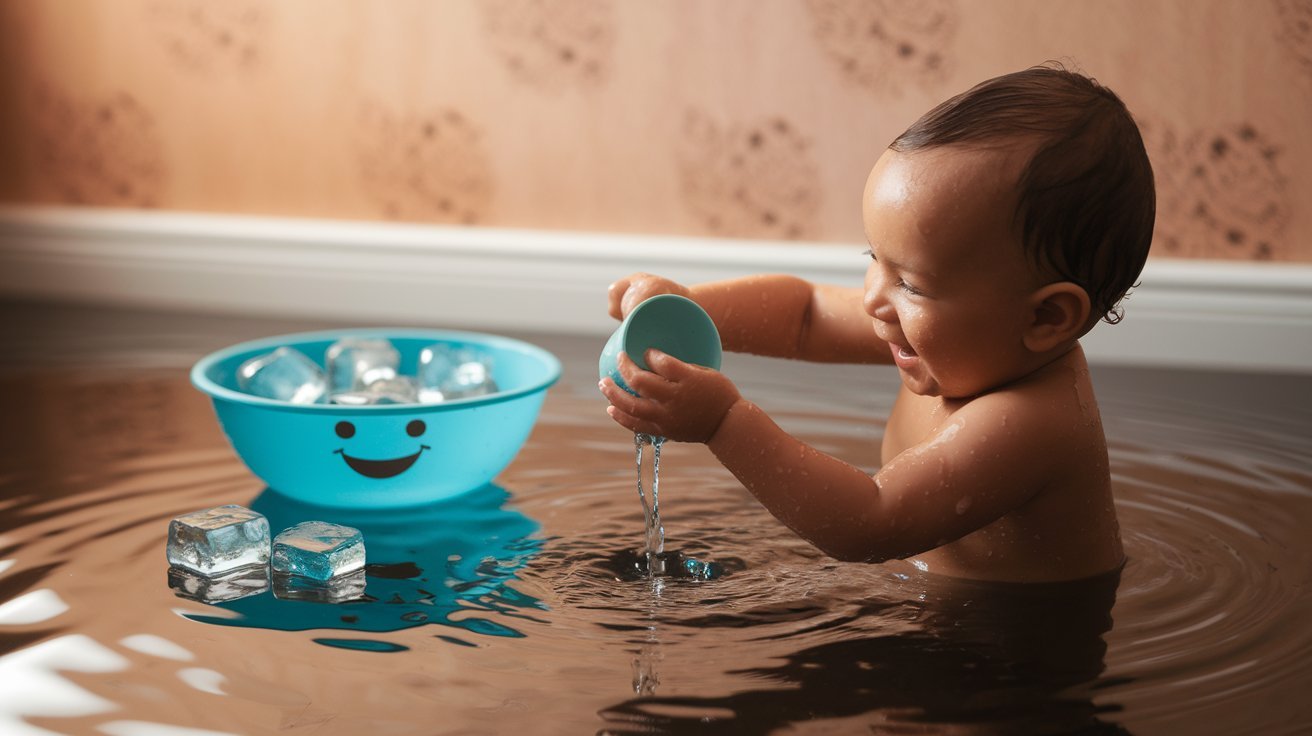
Water is magical for babies. It moves, splashes, reflects light, and feels different from anything else they touch during the day.
Bath time is the perfect chance for water play. Give your baby plastic cups, small bowls, and spoons. They’ll pour water from one container to another, learning about cause and effect. The sound of water splashing adds auditory input while they play.
Ice cubes in a bowl create an exciting sensory experience. Place two or three cubes in a plastic bowl and let your baby touch them with supervision. They’ll feel the cold temperature and watch the ice melt into water. Stay close because ice can be a choking hazard if pieces break off.
Kitchen-Based Sensory Play
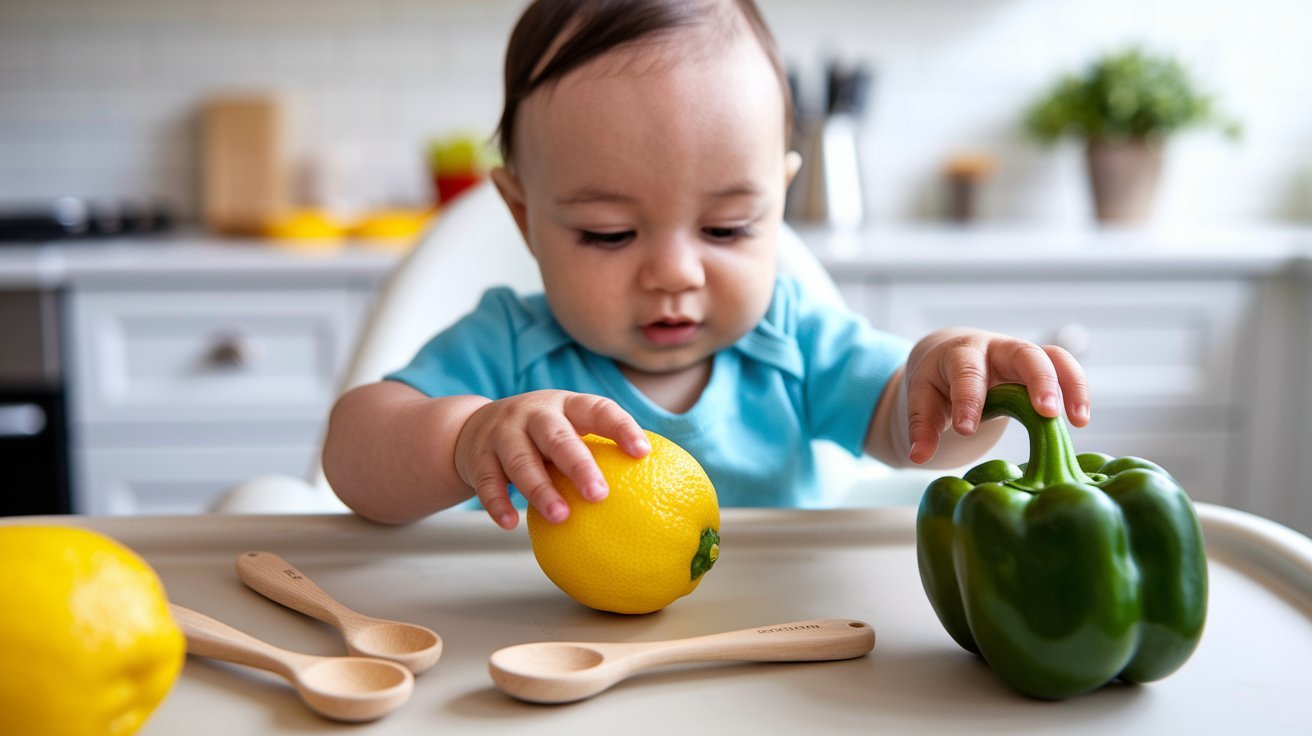
Your kitchen has amazing sensory tools hiding in plain sight. Regular produce items become fascinating toys for your baby’s developing senses.
Give your baby a whole lemon to hold and explore. The bumpy texture feels interesting, and the bright yellow color catches their eye. Let them roll it on their highchair tray. A whole bell pepper works great too smooth skin, hollow inside, and makes a light sound when tapped.
Measuring cups and wooden spoons make wonderful first toys. Babies love banging spoons on highchair trays and nesting cups inside each other. These activities build hand-eye coordination and teach about sizes and sounds.
Simple Peek-a-Boo Games
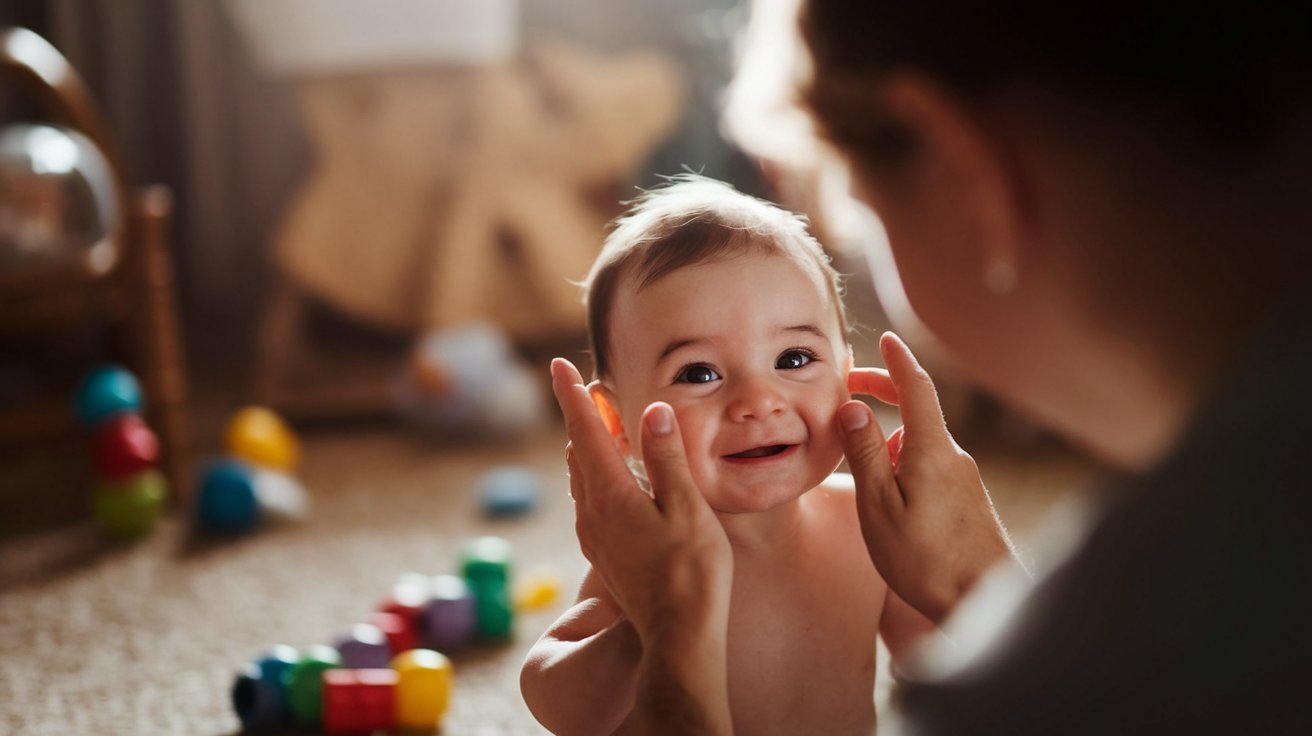
Peek-a-boo isn’t just fun; it teaches your baby that things still exist even when they can’t see them. This concept is called object permanence, and it’s a huge brain development at this age.
Start with the classic version. Cover your face with your hands, then open them and say “peek-a-boo!” Your baby’s face will light up. This game helps them track movement with their eyes and builds the connection between what they see and what they expect.
Try hiding toys under a blanket. Let your baby see you hide a favorite rattle, then encourage them to lift the blanket and find it. This builds problem-solving skills and visual memory.
Rattle and Shaker Play
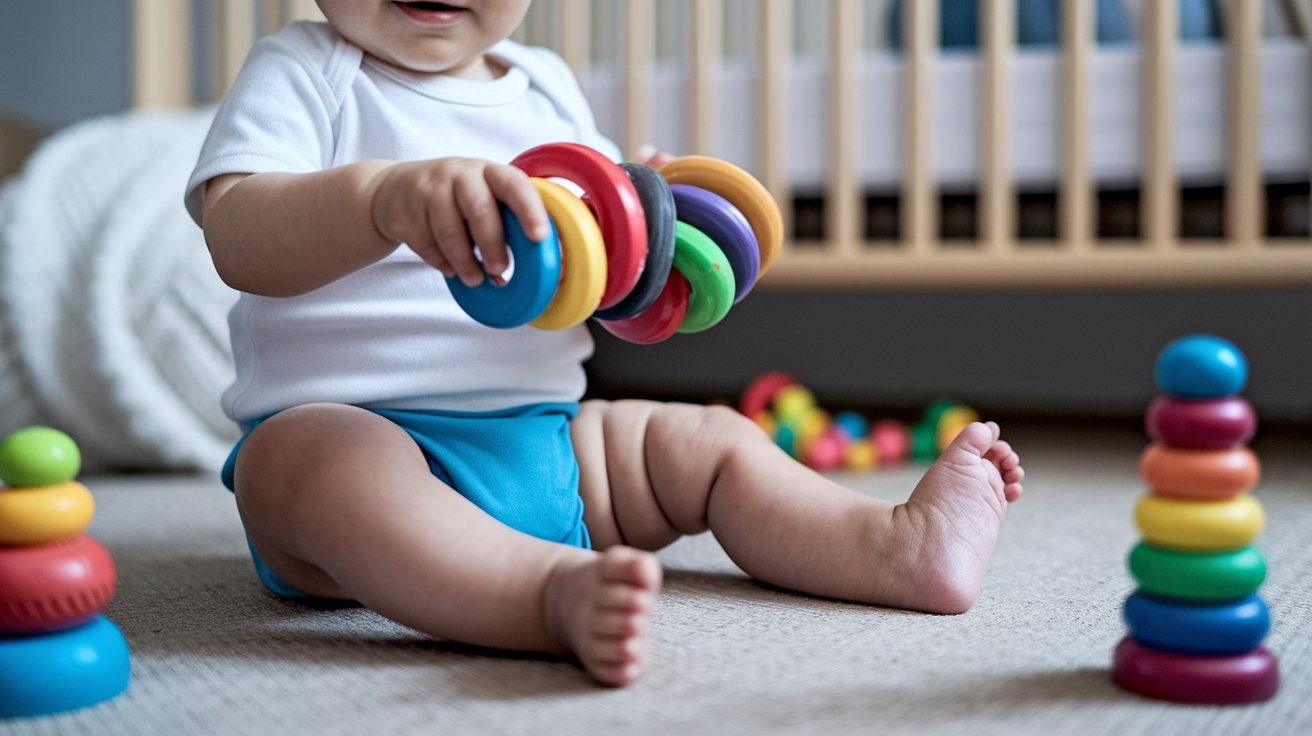
Rattles are classic baby toys for good reason. They pack multiple sensory benefits into one simple object.
The sounds rattles help your baby learn to locate where noise comes from. Shake a rattle on one side, then the other. Your baby will turn their head to follow the sound. This auditory tracking is an important skill that supports language development later.
Grasping and shaking rattles build the small muscles in your baby’s hands. At 8 months, your baby is working on their pincer grasp using the thumb and finger together. Different rattle shapes give practice with different grips.
Music and Movement Play
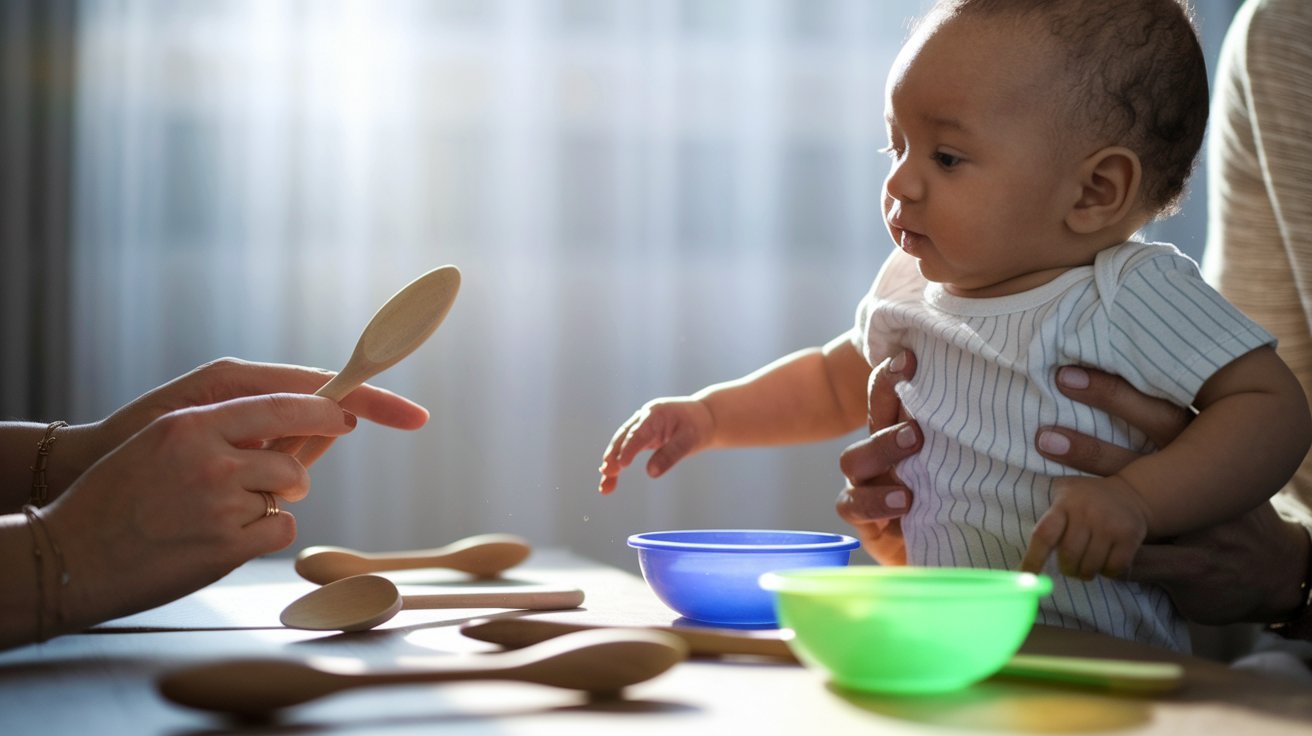
Sound and motion together create a rich sensory experience that babies love. Music activities support both hearing development and body awareness.
Play different types of music throughout the day. Try classical, folk, jazz, and children’s songs. Hold your baby and sway or bounce gently to the beat. They feel the rhythm through your movements and begin to understand patterns in sound.
Make music with household items. Wooden spoons on plastic bowls, shaking containers with dried pasta inside, or tapping on cardboard boxes all create sounds. Let your baby hold the “instrument” and make noise. This teaches cause and effect while building confidence.
Mirror Play Activities
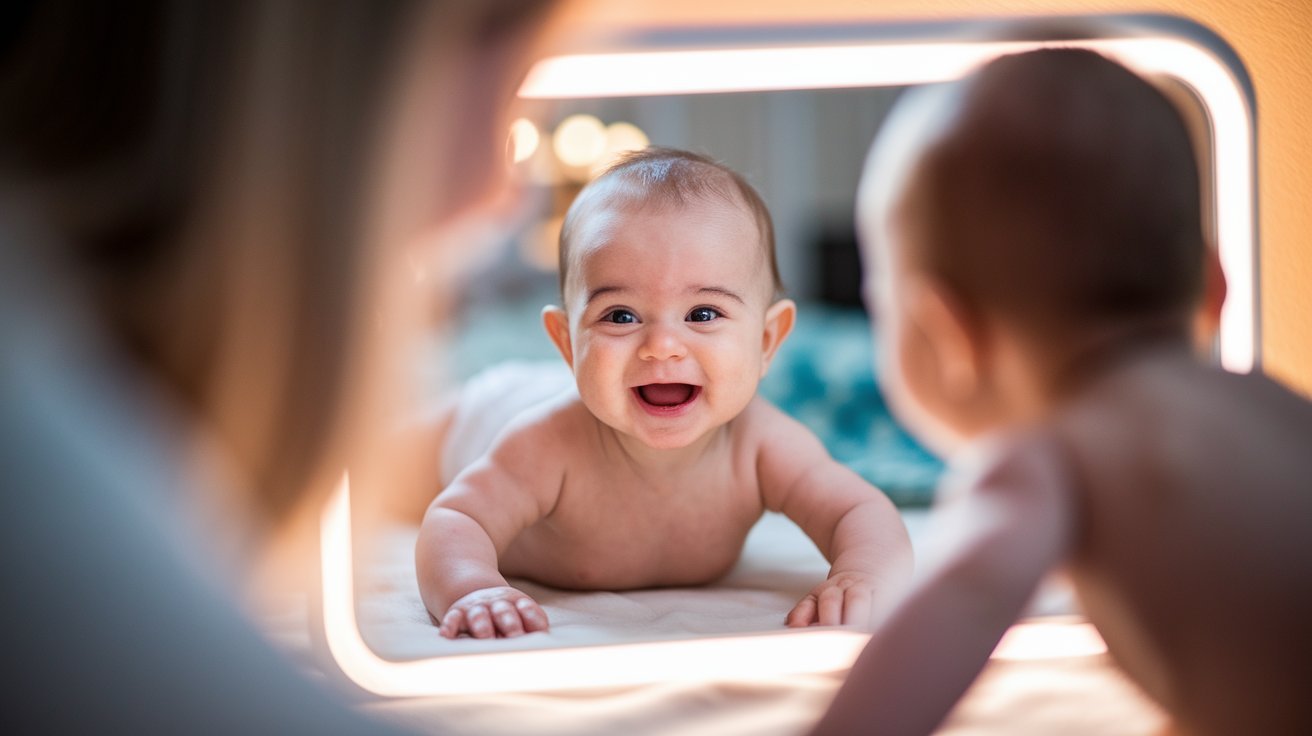
Mirrors fascinate 8-month-olds because they’re just starting to recognize faces, including their own reflection.
Place a baby-safe mirror in front of your little one during tummy time. They’ll push up on their arms to get a better look, building strength while having fun. Talk about what you see: “Who’s that baby? That’s you!”
Make faces in the mirror together. Stick out your tongue, open your mouth wide, or smile big. Your baby will watch closely and may try to copy you. This supports social learning and helps them connect facial expressions with emotions.
Crawling Obstacle Courses
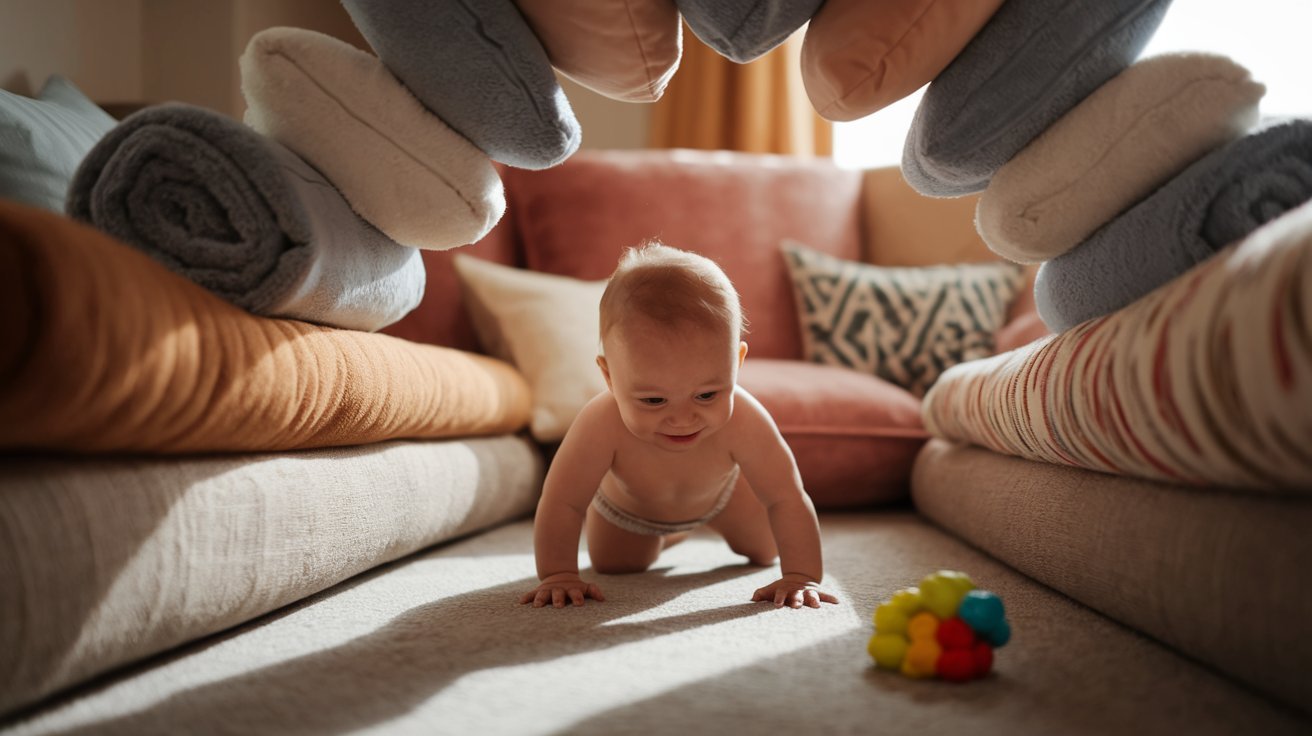
If your baby is starting to crawl or scoot, a simple obstacle course provides great sensory input through movement.
Use couch cushions, pillows, and rolled towels to create things to climb over. The different textures under their hands and knees give tactile input. Going up and over objects builds strength and spatial awareness.
Place toys just out of reach to encourage movement. Your baby will work to get to the toy, building motor skills and problem-solving abilities. When they reach it, they get the reward of playing with something they wanted.
Sensory Bottles
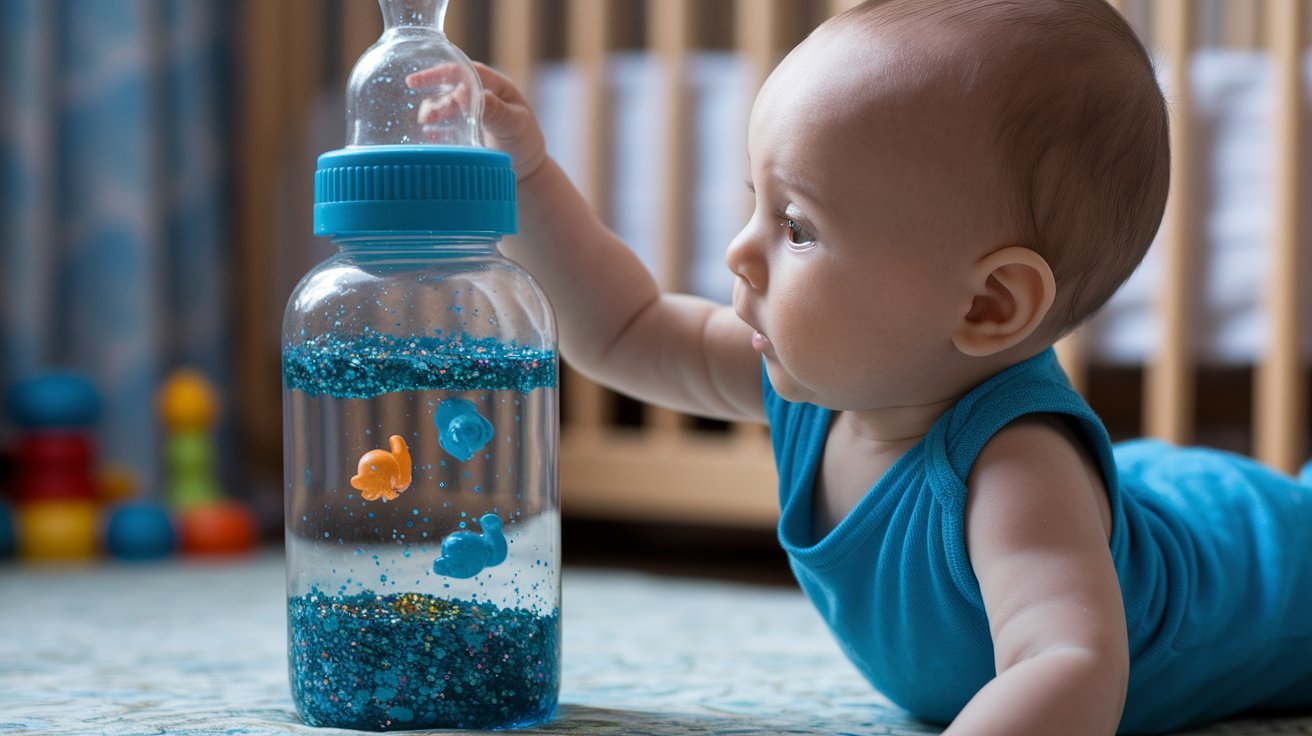
Sensory bottles are safe, sealed containers filled with interesting things to look at. They’re perfect for 8-month-olds who put everything in their mouths.
Make a simple bottle with water, food coloring, and glitter. Seal it very tightly with hot glue under the cap. Your baby can shake it and watch the glitter swirl and settle. The visual input is calming and helps with focus and tracking.
Try a bottle with water and small plastic toys that float. Add blue food coloring for an ocean theme. When your baby tips the bottle, the toys move in slow motion through the water.
Safety Guidelines for 8-Month-Old Sensory Play
Keeping your baby safe during play is the most important thing. These guidelines help you choose activities that are both fun and secure.
- Any object smaller than a toilet paper tube is a choking hazard.
- At 8 months, babies put everything in their mouths to learn, not just to eat.
- Be extra careful about object size.
- Avoid items that can break into small pieces (e.g., foam, toys with snap-off parts).
- Choose items that stay intact even when chewed.
- Small balls, coins, buttons, balloons, and any toy parts under 1.25 inches.
- Choking hazard foods: grapes, nuts, popcorn.
- Stick to larger objects that can’t fit fully into the baby’s mouth.
Conclusion
At 8 months, your baby has the readiness to explore via senses and an interest in the world. Basic things like feeling soft fabric or bumpy toys with texture stir interest. Such activities can also strengthen fine motor skills.
Another thing that is a favorite at this stage is water play. Allow your baby to swirl their hands within warm water or splash into a shallow basin. Sensory awareness is built up by slow movements.
Every baby develops at their own particular pace, so do remember that. Remember, development varies from baby to baby. Stay close during play, keep materials safe, together with follow your little one’s interests.
Frequently Asked Questions
How long should sensory activities last for an 8-month-old?
Keep sensory sessions short, around 10 to 15 minutes at a time. Your baby’s attention span is still developing, and they tire quickly. Watch for signs of overstimulation like fussiness or turning away. Multiple short sessions throughout the day work better than one long period.
Can I do sensory activities every day with my 8-month-old?
Yes, daily sensory play benefits your baby’s development. Mix up the activities to provide variety. Some days focus on touch, other days on sound or movement. This variety keeps things interesting and supports all areas of sensory growth without overwhelming your little one.
What if my baby doesn’t seem interested in sensory activities?
Try different activities at different times of day. Some babies engage more after a nap when they’re alert and happy. Start with simple activities and build up slowly. Not every baby likes every activity, and that’s completely normal.
Are homemade sensory activities as good as store-bought toys?
Homemade sensory activities for 8-month-old babies work just as well as expensive toys. Items like wooden spoons, fabric scraps, and plastic containers provide rich sensory input. The key is variety and safety, not cost.
How do I know if my baby is getting enough sensory stimulation?
Your baby shows they’re getting good sensory input through their development and mood. They should be curious, engaged during play, and meet typical milestones. If you’re doing a few different sensory activities for 8-month-old children each week.
